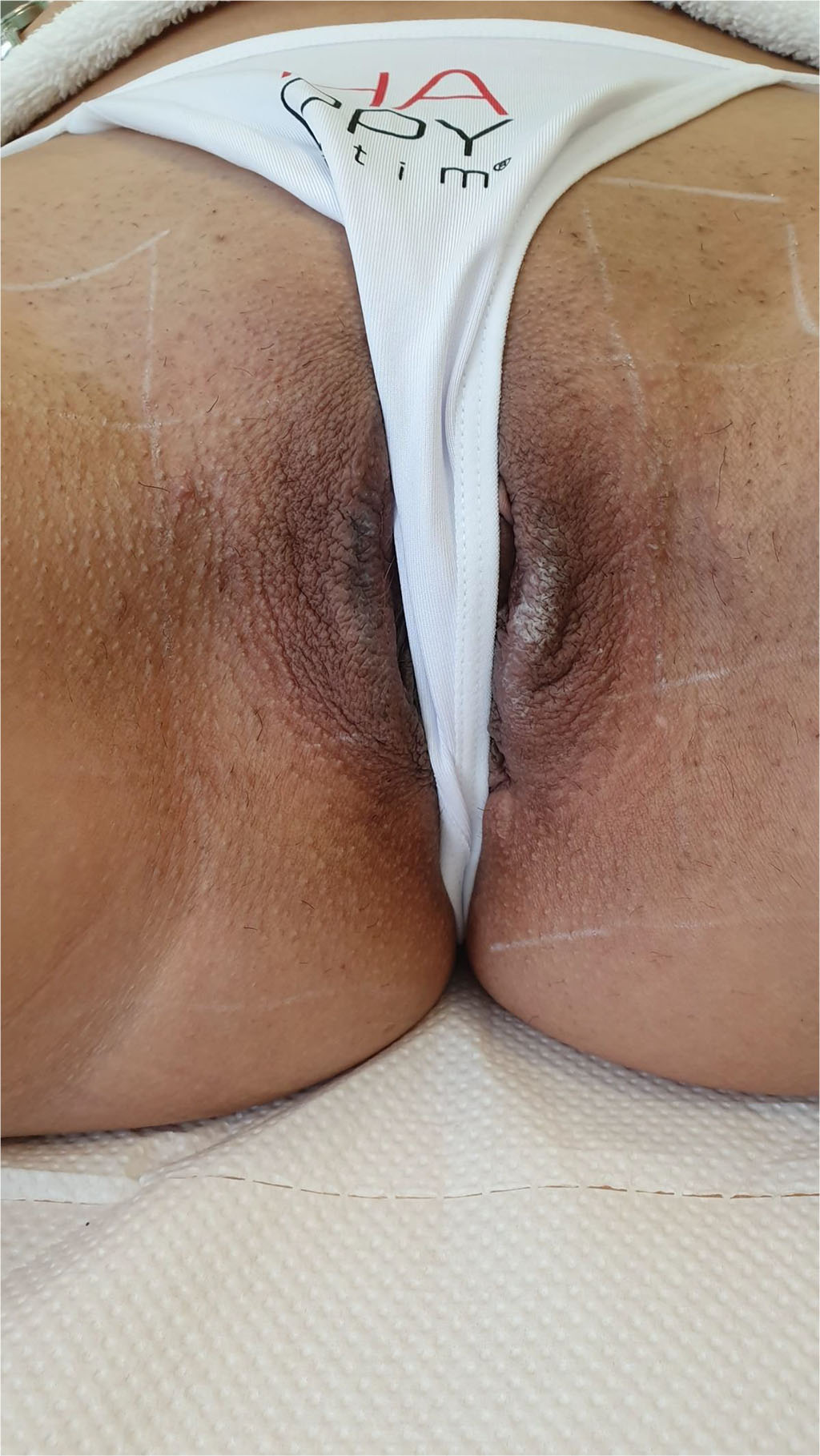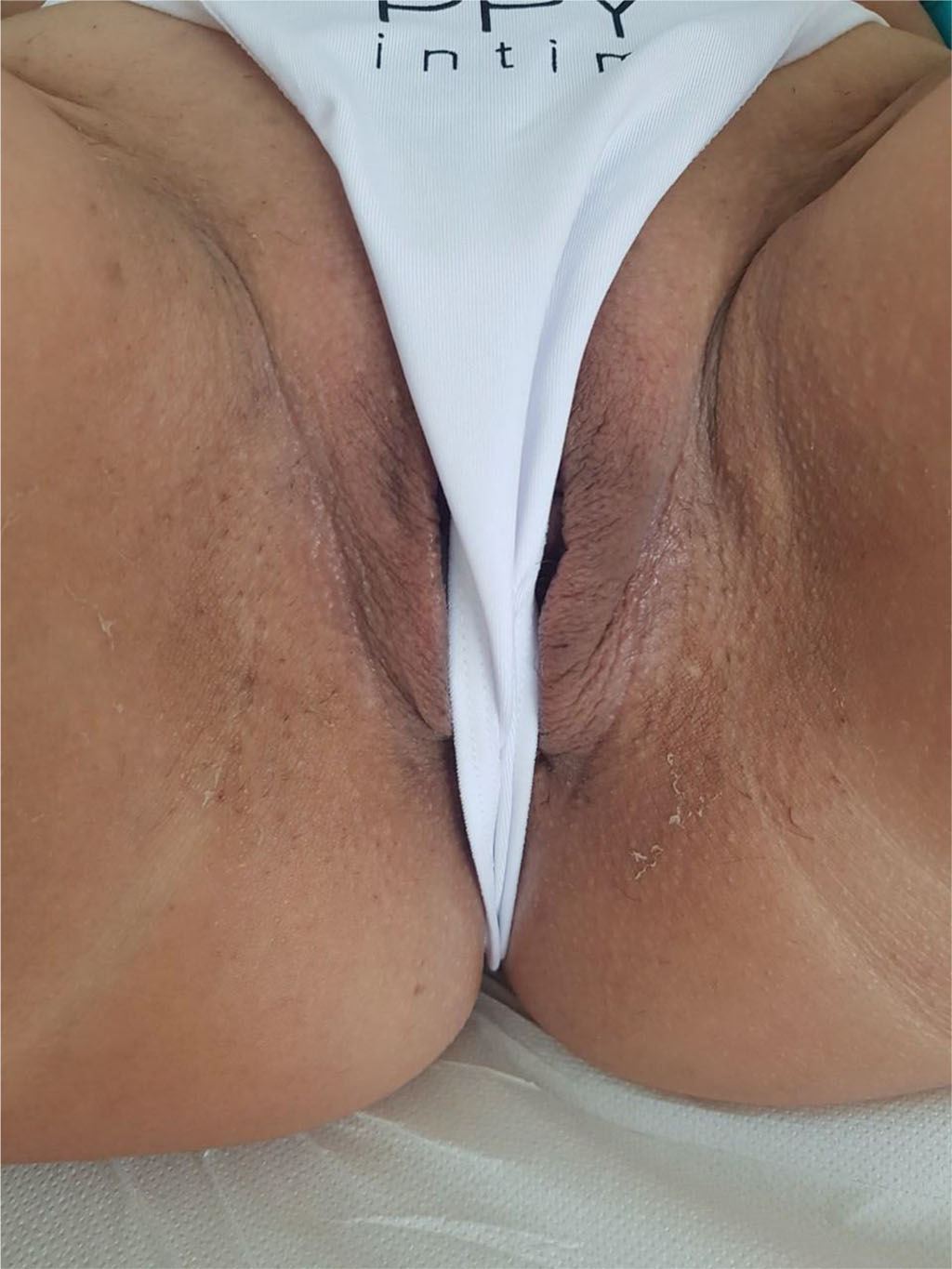- Home
- About the Journal
- Peer Review
- Editorial Board
- For Authors
- Reviewer Recognition
- Archive
- Contact
- Impressum
- EWG e.V.
Chemical peels are recently used in gynecology for the treatment of pigmentation in the anogenital area. Trichloroacetic acid is a peel used most commonly in cosmetic dermatology. It has a great potential to lighten and rejuvenate the skin in the anogenital area. We present a case of pigmentation of the vulva due to photoaging and pregnancy and its successful and efficient treatment with trichloroacetic acid. We describe the precise technique of trichloroacetic acid peel approach in the anogenital area.
Keywords: chemical peels, trichloroacetic acid, anogenital area, vulva, rejuvenation
Chemical peeling represents a novel approach in gynecology for the treatment of some superficial problems and disorders associated with pigmentation in anogenital area. It also improves skin quality and tightening. Chemical peels are methods based on the application of one or more chemical ablative agents to the skin's surface in order to produce a wide range of cutaneous burns [1]. This process causes skin rejuvenation by destruction of skin layers and their exfoliation. The depth of chemabrasion depends on the chemical used and its concentration, method of application, contact time, skin condition and preparation [2]. After rapid regeneration of the tissue in the treated area the skin is tightened and rejuvenated [3].
Chemical peels are classified in subtypes according to the depth of penetration into the tissue. One of the most common chemicals is the trichloroacetic acid which mechanism of action is denaturation of proteins [4]. Treatment of pigmentation disorders with trichloroacetic acid can lead to some unwanted reactions as scarring and hyperpigmentation of the tissue [5]. Frosting of the tissue is an important observational phenomena when a trichloroacetic acid is used. That’s the whitening of the skin due to the protein precipitation. Frosting can be used as a clinical marker for the peel depth [6].
Wide range of pigmentation disorders can affect the vulva. Most commonly increased pigmentation on the vulva appears after pregnancy due to hormonal stimulation of the melanogenesis. The vulvar skin could be also hyperpigmentated postinflammatory or after lichen planus for example [7]. In current practice most patients that seek peeling procedures of the vulva are young women with vulvar hyperpigmentation which appeared after pregnancy.
We present a case of a 42 aged female complaining from increased pigmentation on her external genitalia resulting after first pregnancy and worsening every summer due to sun exposure. After discussion with the patient we decided to perform a treatment with chemical peeling to restore colour and turgor of the vulvar skin. We used chemical peel with trichloroacetic acid (HAPPY Intim@ Vigorate Mix, Skin Tech Pharma Group, Spain). Our treatment protocol included total of 3 peeling procedures, once a week, every 2 weeks. The chemical peeling was applied on the vulvar skin with cotton swab from lateral to medial. After appearance of the frosting effect (the white colour of the peeled skin) we used special lightening cream (HAPPY Intim@ Lightening Cream, Skin Tech Pharma Group) for neutralization of the trichloroacetic acid (Fig.1).

Fig.1. Patient treated with TCA chemical peel and the observed “frosting”effect.

Fig.2 Vulvar skin with visible whitening 7 days after application of trichloroacetic acid peel
We use the frosting effect as a marker for the depth of the peeling. The more prominent the frosting becomes the deeper the expected skin exfoliation will be. Neutralization of the trichloroacetic acid after observation of the frosting phenomena reduces the risk of complications. Patient had to also use the lightening cream posttreatment in home care. We observed visible skin lightening and rejuvenation, improvement of skin color and turgor 7 days after the first chemical peeling procedure (Fig.2). Patient was very satisfied with the results.
Our case report shows that the use of trichloroacetic acid is rapid, safe and effective peel technique for pigmentation disorders of the external genitalia in women. The chemabrasion of the external genitalia in women with trichloroacetic acid is a novel and different approach. It also provides rejuvenation and improvement of the turgor of the vulvar skin. The procedure will become more popular among women of all age and race. The chemical peel technique we describe is appropriate for all light- and dark-skinned patients. It provides an easy implementable tool for all gynecological and dermatological practices.
This case report represents women’s increasing need for various cosmetic gynecology procedures. We describe in details the steps and the protocol we use in our daily practice for chemical peeling of the external genitalia. Our opinion is that the trichloroacetic acid peel is safe and cost-effective procedure that will rise in demand in the future.
N.T. was responsible for the diagnostic procedures, clinical diagnosis, and treatment decisions. The author have read and agreed to the published version of the manuscript.
We thank Skin Tech Pharma Group for providing cost-free HAPPY Intim@ Vigorate Mix for this case report.
The author declares that all the procedures and experiments of this study respect the ethical standards in the Helsinki Declaration of 1975, as revised in 2008, as well as the national law. Written informed consent was obtained from the patient for publication of this case report and any accompanying images
The author has no conflict of interest relevant to this article.
“No funding for this study“